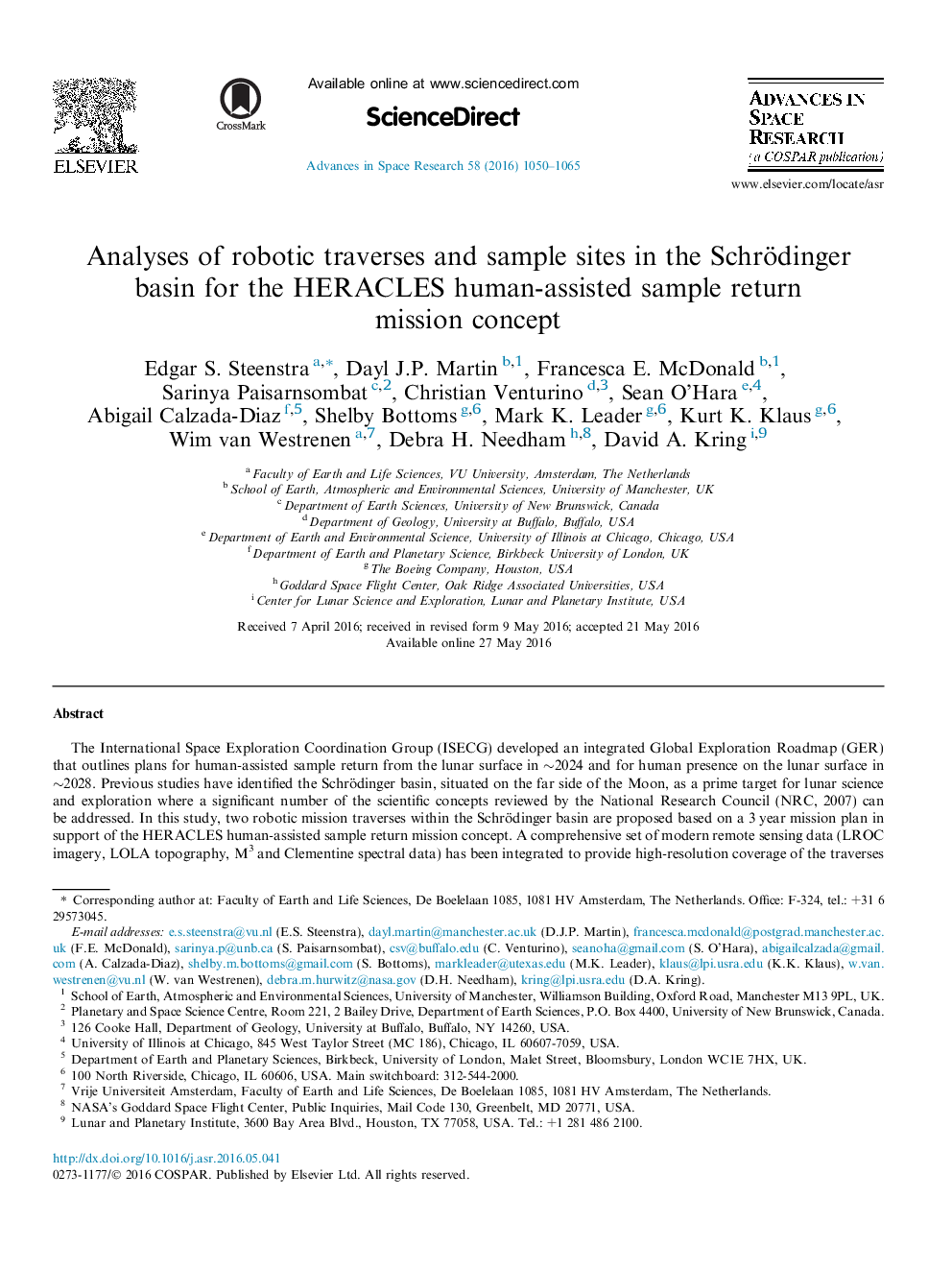| کد مقاله | کد نشریه | سال انتشار | مقاله انگلیسی | نسخه تمام متن |
|---|---|---|---|---|
| 1763219 | 1019989 | 2016 | 16 صفحه PDF | دانلود رایگان |
• Potential robotic traverses for ESA-led HERACLES mission concept.
• Long duration exploration of the Schrödinger basin.
• Maximizing scientific return with lunar exploration.
The International Space Exploration Coordination Group (ISECG) developed an integrated Global Exploration Roadmap (GER) that outlines plans for human-assisted sample return from the lunar surface in ∼2024 and for human presence on the lunar surface in ∼2028. Previous studies have identified the Schrödinger basin, situated on the far side of the Moon, as a prime target for lunar science and exploration where a significant number of the scientific concepts reviewed by the National Research Council (NRC, 2007) can be addressed. In this study, two robotic mission traverses within the Schrödinger basin are proposed based on a 3 year mission plan in support of the HERACLES human-assisted sample return mission concept. A comprehensive set of modern remote sensing data (LROC imagery, LOLA topography, M3 and Clementine spectral data) has been integrated to provide high-resolution coverage of the traverses and to facilitate identification of specific sample localities. We also present a preliminary Concept of Operations (ConOps) study based on a set of notional rover capabilities and instrumental payload. An extended robotic mission to the Schrödinger basin will allow for significant sample return opportunities from multiple distinct geologic terrains and will address multiple high-priority NRC (2007) scientific objectives. Both traverses will offer the first opportunity to (i) sample pyroclastic material from the lunar farside, (ii) sample Schrödinger impact melt and test the lunar cataclysm hypothesis, (iii) sample deep crustal lithologies in an uplifted peak ring and test the lunar magma ocean hypothesis and (iv) explore the top of an impact melt sheet, enhancing our ability to interpret Apollo samples. The shorter traverse will provide the first opportunity to sample farside mare deposits, whereas the longer traverse has significant potential to collect SPA impact melt, which can be used to constrain the basin-forming epoch. These robotic missions will revalidate existing lunar surface capabilities and pioneer new ones and, thus, provide important precursor results for subsequent human missions to the lunar surface.
Journal: Advances in Space Research - Volume 58, Issue 6, 15 September 2016, Pages 1050–1065
